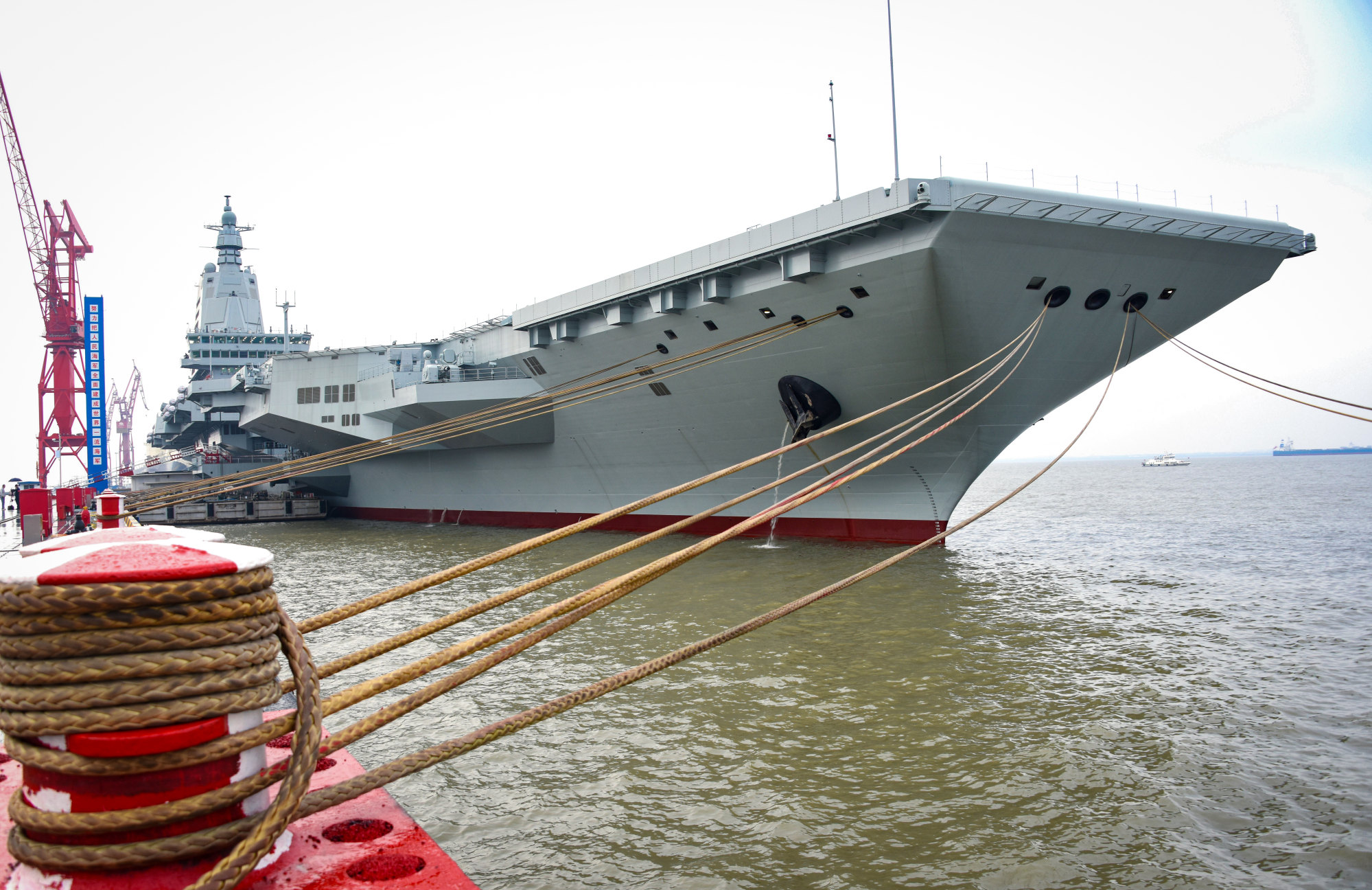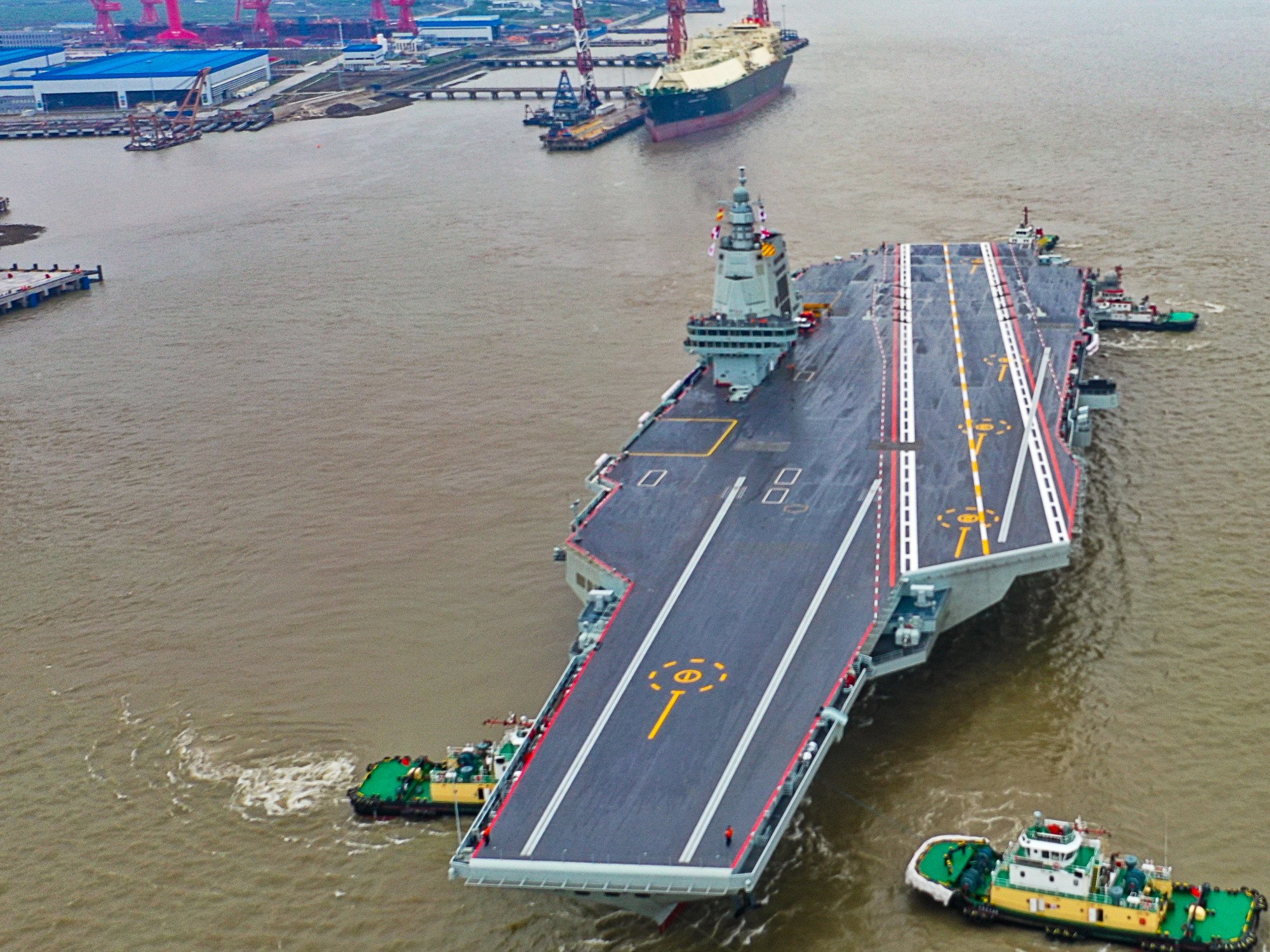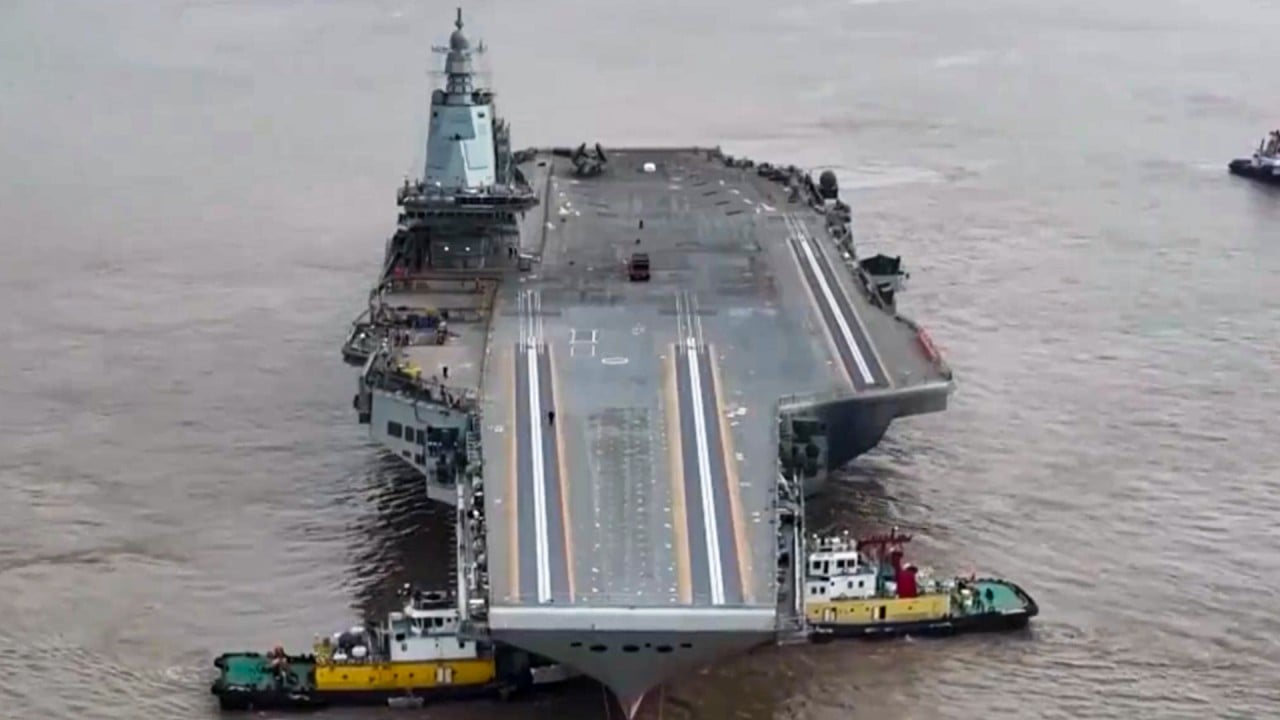
China’s third aircraft carrier Fujian tests power, navigation in maiden sea trial
- No aircraft were visible on the carrier’s deck in official images and videos, with testing of its electromagnetic launch catapults expected in later trials
- Chinese state media reported that the first homegrown carrier left its dock in a Shanghai shipyard at about 8am on Wednesday
The sea trial was announced by state news agency Xinhua on Wednesday morning in a brief report which said the Fujian was unmoored from its dock at about 8am.
The Fujian, launched in June 2022, is China’s first aircraft carrier equipped with electromagnetic catapults, which will enable the vessel to launch aircraft more regularly.
Military experts said the sea trials are expected to take at least a year, with the first phase focusing on power, navigation and communication systems that support the catapult and all-electric integrated power system.
Take-off and landing tests are unlikely to take place in the first sea trial, with images and video footage released by official media showing no aircraft on the carrier’s deck.

The first signs of preparations came on Tuesday when rare maritime traffic controls were announced around the mouth of the Yangtze River, effective from 4.30am to 3pm on Wednesday, which military experts said could be paving the way for the trial.
The Jiangnan shipyard, where the carrier was built, is located at the mouth of the Yangtze.
Another notice on Tuesday from the maritime authorities said that “military activities” would be carried out in the East China Sea from 7am on May 1 to 9am on May 9, and that “unrelated vessels” were prohibited from entering a designated rectangle of water.
According to the Xinhua report, the initial sea trials “will primarily test the reliability and stability of the aircraft carrier’s propulsion and electrical systems”.
“Since its launch in June 2022, the Fujian has completed its mooring trials, outfitting work and equipment adjustments. It has met the technical requirements for sea trials,” it added.
Yue Gang, a retired People’s Liberation Army colonel, said that in coming days, power generation and distribution of the steam turbine propulsion system will be tested, along with the pressure endurance of pipelines and valves.

The Fujian’s ability to steer and reverse will also be put to the tested during the carrier’s inaugural sea trial, according to Yue.
If the Fujian’s advanced electromagnetic catapult and interception systems perform well and are reliable, “[they] will not need to be tested again and can be directly applied on China’s future Type 004 nuclear-powered aircraft carrier”, he said.
The Fujian is China’s third aircraft carrier and the first built to a domestic design. The People’s Liberation Army plans to have six carriers in total by 2035, which would make it the world’s second largest blue-water navy after the US.
Whether China makes the breakthrough to use nuclear power for its fourth carrier has been under close attention from industry and the global community but Beijing’s plans have not been outlined.
Today’s inaugural trial will be the first of many for the Fujian, with several years of trials needed before it is ready for full service. China’s existing carriers, the Liaoning and the Shandong, underwent 10 and nine trials, respectively.
The USS Gerald R. Ford - the only other aircraft carrier in the world with the Catapult Assisted Take-Off Barrier Arrested Recovery system – was commissioned in 2017 but did not go out on its first deployment until 2022.
Military commentator Song Zhongping, a former PLA instructor, said it was difficult to estimate the test period’s duration because it depended on conditions in the first sea trial, “including the adaptability of the [propulsion, electrical, navigation and communication] systems”.
“After all, they are all new systems, including the all-electric integrated power system,” he said, adding that aircraft take-off tests would take place “at a later time”.
If the initial trials go smoothly, the Fujian will be ready to enter the next phase of “experimental service” in about a year, when continued tests, including flight take-offs with the new catapults, are conducted during service, Song said.
The Liaoning, China’s first aircraft carrier, was originally a half-built Soviet Kuznetsov-class vessel that was refitted before being commissioned in 2012. The PLA Navy’s second carrier, the Shandong, is based on the Liaoning’s design. Like the Fujian, they are conventional carriers.
Beijing-based naval analyst Song Xiaojun told state broadcaster CCTV that once the Fujian is commissioned, the PLA Navy will be able to “maintain a carrier presence in relatively important waters” at all times.
The three vessels could take it in turns to rotate between combat duty, repairs and training exercises, he said.
Will China’s fourth aircraft carrier steer towards troubled waters in Asia?
Song added that the Fujian’s advanced technology would provide the PLA Navy with “very good practical experience in building aircraft carriers of the same type and possibly even larger types”.
The Fujian is said to be China’s “supercarrier”, more advanced than the previous two, which are smaller and use less efficient ski-jump ramps to help aircraft take off.
Taiwan’s defence ministry has warned that the Fujian would pose a “substantial threat” to the island, which Beijing regards as part of its territory, in the event of a cross-strait conflict.
Most countries, including the United States, do not recognise Taiwan as an independent state, but Washington opposes any attempt to take the self-ruled island by force and is committed to arming the island to help it defend itself.




